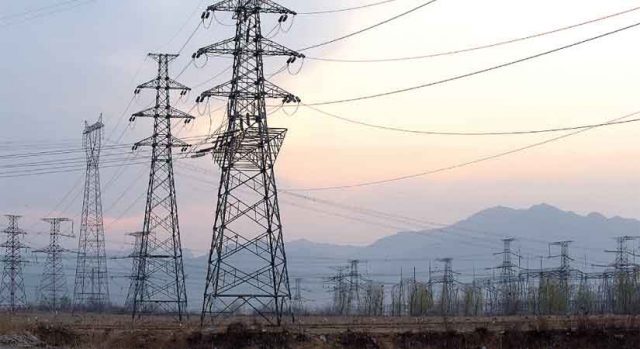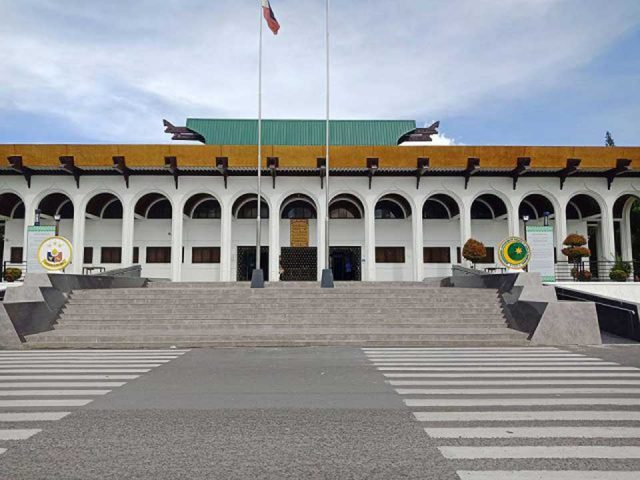By Kyle Aristophere T. Atienza and John Victor D. Ordoñez, Reporters
A PHILIPPINE coast guard official on Thursday belied its Chinese counterpart’s claim that a fishery vessel had “illegally intruded” into Beijing’s waters.
“This statement is inaccurate,” Commodore Jay Tristan Tarriela, the coast guard’s spokesman on South China Sea issues, told reporters. “The Bureau of Fisheries and Aquatic Resources (BFAR) vessel, BRP Datu Sanday, continues to patrol the waters of Bajo De Masinloc.”
He said the ship is actively ensuring the security of Filipino fishermen in the area.
The Chinese Coast Guard earlier in the day said it had driven away a Philippine vessel and accused it of “illegally intruding” into its waters near Scarborough Shoal in the South China Sea.
Located within the Philippines’ exclusive economic zone (EEZ), Scarborough Shoal is also claimed by China, making it one of Asia’s most contested maritime features and a flashpoint for flare-ups.
China claims almost the entire South China Sea, a conduit for more than $3 trillion in annual ship commerce. Its territorial claims overlap with those of the Philippines, Vietnam, Malaysia and Brunei.
In 2016, an international arbitration tribunal in the Hague said China’s claims had no legal basis, a decision Beijing has rejected
Mr. Tarriela said the Philippines’ transparency campaign in the South China Sea might soon focus on food security to get the support of other Southeast Asian countries.
The Philippines this month started patrols around Scarborough Shoal as China continues to bar Filipino fishermen from their traditional fishing ground that Beijing has occupied since 2012.
“I predict that our transparency efforts will shift to highlight issues such as food security, the welfare of the Filipino fishery and the protection of the marine environment,” he separately told a forum.
The Philippines under President Ferdinand R. Marcos, Jr. has been exposing China’s repeated attempts to block resupply missions at Second Thomas Shoal, embedding journalists in these missions so they can report the incidents at sea.
Mr. Tarriela said silence of other Southeast Asian nations on “China’s provocative and unlawful tactics” is apparent.
He said the Philippines does not expect its neighbors to support its standing up to China because some of them are claimant states and most of them do not want to provoke China.
“To appease or receive some support from these countries, we need to flip our transparency approach,” he said. “Instead of focusing on the swarming of Chinese vessels or resupply operations, we would focus on food security or protection of fishermen.
“With this kind of transparency, we can expect that our Southeast Asian neighbors will somehow support us,” he added.
Scarborough Shoal has been the focus of Philippine government missions in the South China Sea this month, as the country seeks to ensure Filipino fishermen’s access to the low-tide elevation, which is locally called Bajo de Masinloc.
Last week, the Philippine fisheries bureau said Chinese and Vietnamese fishermen had been using cyanide in Scarborough Shoal.
BFAR spokesman Nazario C. Briguera on Feb. 17 said “the Chinese intentionally destroy Bajo de Masinloc to prevent Filipino fishing boats from fishing in the area.” Damage to the shoal has been estimated at more than P1 billion.
Mr. Tarriela said the President had ordered the Philippine Coast Guard and BFAR to conduct joint scientific research to determine whether Chinese fishermen were behind the cyanide use. The agencies will work with the University of the Philippines Marine Science Institute, he added.
The shoal is 240 kilometers west of the main Philippine island of Luzon and is about 900 kilometers from Hainan, the nearest major Chinese landmass.
Mr. Tarriela said they expect Chinese disinformation to proliferate in the Philippines as it nears midterm elections in 2025.
“Politicians may exploit patriotic sentiments for their own gain,” he said. “Politicians may prioritize delivering speeches and pushing their own political agenda without definitely considering the potential repercussions on our national security and foreign policy.”
An OCTA Research Group poll in December showed 77% of Filipinos support increased military activities within the Philippine EEZ in the South China Sea, up from 65% in October.
Mr. Tarriela said the Philippines is expected to gain the support of more countries as it confronts China’s aggression within Philippine territories.
“This increase in support is driven by the rising interest of international journalists in exposing China’s unlawful behavior,” he said. “Their cameras, pens and the power of social media platforms are instrumental in sharing factual narratives.”
‘LEGAL HIGH GROUND’
Meanwhile, the Philippines should push the creation of an international coalition with its neighbors to pressure China to stop its dredging and large-scale clam harvesting that is destroying marine life in the South China Sea, Gregory B. Poling senior fellow and director of the Southeast Asia Program and Asia Maritime Transparency Initiative at the Center for Strategic and International Studies (CSIS), told a media briefing in Mandaluyong City .
“Any effort to physically prevent [China’s aggression] is going to be hopeless, they’ve got more boats than anybody else combined,” he said.
He added that the coalition should check the marine damage and negotiate for a joint marine scientific fishery research and invite China to join. “China will probably say no.”
The Chinese Embassy in Manila did not immediately reply to a Viber message seeking comment.
Based on a CSIS study in December, China’s dredging and giant clam harvesting has damaged at least 21,000 acres of coral reefs in the waterway.
Vietnam has also been building outposts in the area, damaging at least 1,500 acres of coral reefs through dredging. The Philippines, Malaysia and Taiwan have damaged fewer than 100 acres of coral reefs in the South China Sea, according to the study.
Mr. Poling said countries are more inclined to follow international law if their actions cost them too much reputational and economic damage.
The Philippine Senate on Wednesday passed on second reading a bill that seeks to set up maritime zones and territories in the South China Sea.
Mr. Polling, who had participated in committee hearings, told reporters the measure is unlikely to deter China from intruding into Philippine-claimed areas in the waterway.
“There needs to be a slow accumulation of pressure and what the Maritime Zones Act will do is to further build up the Philippines’ moral and legal high ground by bringing domestic law more into obvious compliance with the United Nations Convention on the Law on the Sea,” he said.
“This is not a silver bullet, but the fact is that China has suffered very little reputational costs for this behavior and that needs to change, and it cannot be just the Philippines out there imposing its cause as it has for too many years,” he added. — with Reuters












